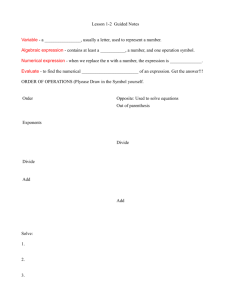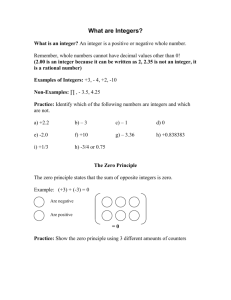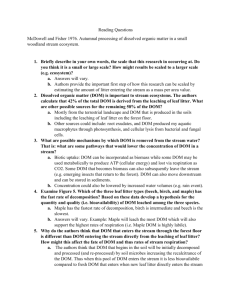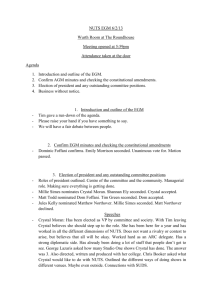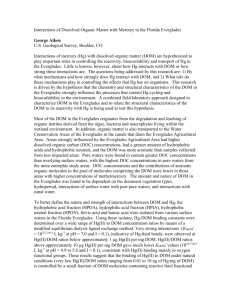File
advertisement
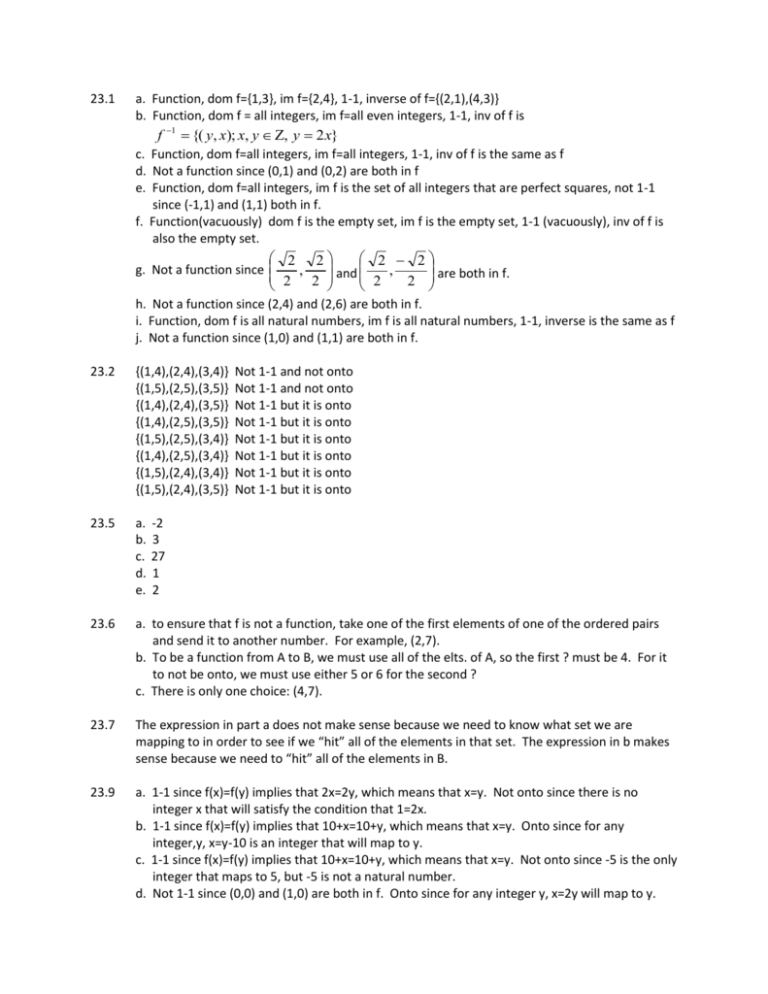
23.1
a. Function, dom f={1,3}, im f={2,4}, 1-1, inverse of f={(2,1),(4,3)}
b. Function, dom f = all integers, im f=all even integers, 1-1, inv of f is
f 1 {( y, x); x, y , y 2 x}
c. Function, dom f=all integers, im f=all integers, 1-1, inv of f is the same as f
d. Not a function since (0,1) and (0,2) are both in f
e. Function, dom f=all integers, im f is the set of all integers that are perfect squares, not 1-1
since (-1,1) and (1,1) both in f.
f. Function(vacuously) dom f is the empty set, im f is the empty set, 1-1 (vacuously), inv of f is
also the empty set.
2 2
2 2
and
g. Not a function since
,
2 2
2 , 2 are both in f.
h. Not a function since (2,4) and (2,6) are both in f.
i. Function, dom f is all natural numbers, im f is all natural numbers, 1-1, inverse is the same as f
j. Not a function since (1,0) and (1,1) are both in f.
23.2
{(1,4),(2,4),(3,4)}
{(1,5),(2,5),(3,5)}
{(1,4),(2,4),(3,5)}
{(1,4),(2,5),(3,5)}
{(1,5),(2,5),(3,4)}
{(1,4),(2,5),(3,4)}
{(1,5),(2,4),(3,4)}
{(1,5),(2,4),(3,5)}
23.5
a.
b.
c.
d.
e.
23.6
a. to ensure that f is not a function, take one of the first elements of one of the ordered pairs
and send it to another number. For example, (2,7).
b. To be a function from A to B, we must use all of the elts. of A, so the first ? must be 4. For it
to not be onto, we must use either 5 or 6 for the second ?
c. There is only one choice: (4,7).
23.7
The expression in part a does not make sense because we need to know what set we are
mapping to in order to see if we “hit” all of the elements in that set. The expression in b makes
sense because we need to “hit” all of the elements in B.
23.9
a. 1-1 since f(x)=f(y) implies that 2x=2y, which means that x=y. Not onto since there is no
integer x that will satisfy the condition that 1=2x.
b. 1-1 since f(x)=f(y) implies that 10+x=10+y, which means that x=y. Onto since for any
integer,y, x=y-10 is an integer that will map to y.
c. 1-1 since f(x)=f(y) implies that 10+x=10+y, which means that x=y. Not onto since -5 is the only
integer that maps to 5, but -5 is not a natural number.
d. Not 1-1 since (0,0) and (1,0) are both in f. Onto since for any integer y, x=2y will map to y.
Not 1-1 and not onto
Not 1-1 and not onto
Not 1-1 but it is onto
Not 1-1 but it is onto
Not 1-1 but it is onto
Not 1-1 but it is onto
Not 1-1 but it is onto
Not 1-1 but it is onto
-2
3
27
1
2
e. Not 1-1 since (-1,1) and (1,1) are both in f. Not onto since 3 is a natural number that can only
be “hit” by 3 , neither of which is a rational number.
x 1 if x 0
. f is onto the natural numbers but not 1-1.
if x 0
0
Define f : by f ( x) x 1 . f is 1-1 but not onto. These do not contradict 23.11
because the sets are not finite.
23.12 Define f : by f ( x)
23.13 Let f : A B be a bijection. To prove that f
it is 1-1 and onto.
1
1
1
: B A is a bijection, we need to prove that
To prove 1-1: Let f ( x) f ( y) . (WTS: x=y)
1
1
Suppose that f ( x) f ( y ) z . Then (x,z) and (y,z) are both in f inverse, so (z,x) and (z,y)
are both in f. Since f is a function that means that x=y. Hence, f inverse is 1-1.
To prove onto: Let a be an arbitrary element of set A. We want to show that there is an
element in set B that maps to a using f inverse. Since f is a function from A to B, and since a is an
element in set A, there must be an element in B that f maps to. That is, (a,b) is in f. Then (b,a) is
in f inverse. Hence, f inverse is onto.






